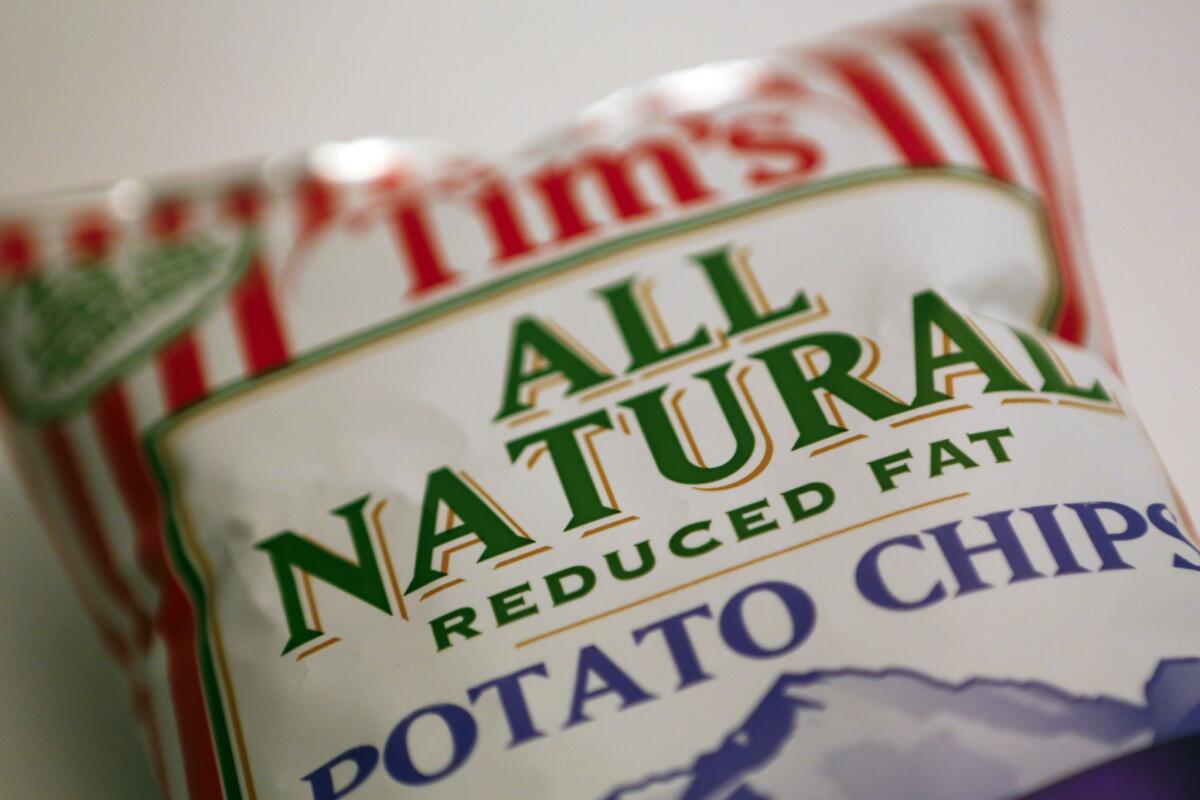6 nutritional rules that everyone can agree upon

“Natural” on the label doesn’t automatically mean low-calorie, experts caution.
That bag of quinoa & black bean tortilla chips may boast the words “organic” and “natural” and “healthy” on the label, but it’s still a bag of chips – and loaded with calories.
“People aren’t aware of what they’re consuming and the number of calories,” says Dr. Edward H. Phillips, co-medical director of the Cedars-Sinai Weight Loss Center, noting that, for example, some smoothies – which many believe are exceptionally healthy – are actually loaded with sugar and calories. “To me eating healthy means: natural foods available in nature, no added sugar or chemicals, as low in simple carbs as possible and low calories if you need to watch your weight.”
See the most-read in Life & Style this hour >>
The Food and Drug Administration announced this week that it will reevaluate its definition of what is “healthy,” a move that could change how many common foods are marketed and labeled. Just don’t expect clarity any time soon. The FDA’s ruling on gluten-free labeling took more than six years to complete.
What are you supposed to do until then? We asked health experts for some dietary suggestions that many of us can agree upon:
1. Get serious about portion control
“One of the biggest mistakes people make when trying to lose weight or improve their health is only focusing on what they eat and not how much,” says Paulette Lambert, nutrition director at California Health & Longevity Institute. And our “super-sized” restaurant servings are no help, she says: “For example, a serving of red wine is five ounces, much less than most restaurants often serve.” (Choosemyplate.gov and diabetes.org are good resources for portion size guidance.)
2. Track what you’re (actually) eating
“Most people are surprised by how many calories they eat,” says Phillips. That’s why most medically supervised weight-loss programs put am emphasis on accurate food journaling.
3. Stop “guesstimating.” Buy a food scale
Use measuring cups, measuring spoons and a food scale “to help establish an eye for the right portions,” says Lambert. “Stop guesstimating and be accurate.”
4. Even “healthy” foods can trigger binges
People tend to overeat foods that are generally labeled as healthy. And that can lead to binging. Bananas and avocados can be especially troublesome to some people trying to watch their weight. “We limit the number of bananas we put out for this reason,” says Sheila Cluff, founder of the Oaks at Ojai, a popular health and fitness destination.
5. Sometime just a taste can satiate
“Don’t pour olive oil from the bottle. Pour it into a tablespoon [the general serving size] first,” says Cluff. She also recommends bypassing the lure of caloric salad dressings by sprinkling a few ground or chopped – not whole – nuts over a salad, in addition to using flavored vinegars and fresh herbs “for more flavor.”
6. Read labels
Oatmeal is deemed “healthy” by many. But oatmeal swimming in sugar is no nutritional superhero. Phillips says marketing and advertising can distract from food nutrition facts. “Never buy a [processed] food product without reading the label.”
ALSO
7 tips to hiring the best personal trainer — for you
6 subscription boxes for the fitness fanatic in you
Why roses may be the cure to your stressed-out, hyperconnected life






